Two weeks earlier, on August 7, 1942, the 1st Marine Division of the U.S. Marine Corps, commanded by Major General Alexander Vandegrift, had landed on Guadalcanal Island and taken the Henderson Airfield under construction by the Japanese at Cape Lunga.
In order to retake Henderson Airfield and wipe out the Allied forces from Gadarkanal Island, the Japanese forces decided to deploy the Yokosuka Chinjufu 5th Special Land Battle Squadron (commanded by Navy Colonel Yoshitatsu Yasuda) and the Ichiki Detachment led by Army Colonel Kiyonao Ichiki as an advance force.
The advance party (Ladder Group 1, 916 men), under the direct command of Colonel Ichiki, left the Truck Depot on August 16 aboard six Kagero-class destroyers and landed at Cape Taibo on Guadalcanal Island (about 35 km east of Henderson Airfield) in the early morning of August 19.
Late in the evening of August 20, the Ichiki Detachment, advancing westward from Cape Taivo, encountered U.S. Marines encamped on the west bank of the Ilu River (U.S. military name: Alligator Creek) in eastern Lunga.
At 01:30 on August 21, the advance detachment of Ichiki Detachment launched an attack against the U.S. Marines on the west bank of the Ilu River, and the first wave of 100 men crossed the Ilu River and charged into the Marine positions.
However, they were met with heavy fire from 37mm howitzers loaded with canister rounds and machine guns, and most of the men were killed as they crossed the Ilu River bar.
At 02:30 on August 21, the second wave of 150 to 200 Japanese soldiers attacked the U.S. Marines again to cross the Ilu River sandbar but was again wiped out by the overwhelming firepower of the U.S. Marines.
At around 5:00 on August 21, the Japanese launched a third attack against the U.S. Marines. Still, the Ichiki detachment suffered heavy losses due to the overwhelming difference in numbers and firepower compared to the U.S. Marines.
Robert Leckie (1920-2001), who served on Guadalcanal as a machine gunner, described the battle in his memoir, Helmet For My Pillow, as follows:
After repelling three-night attacks by the Japanese, the U.S. Marines waited until dawn to deploy four to five M3 Stuart tanks to surround and destroy the remaining Japanese soldiers.
According to Japanese records, 777 of the 916 members of the Ichiki detachment were killed in action, and only 128 survivors, including about 100 who were waiting in the rear, survived.
At 15:00 on August 21, the Ichiki detachment was destroyed by the overwhelming firepower of the U.S. Marines, and its commander, Colonel Ichiki, is said to have committed suicide by burning the regimental flag bestowed upon his regiment by Emperor Meiji.
In 2010, the battle became the climax of the first episode of Steven Spielberg’s and Tom Hanks’ miniseries, The Pacific.
By the way, there is a mysterious ghost story about this Ichiki Detachment that is not known outside of Japan.
At midnight on August 21, after the Ichiki detachment’s advance party was destroyed, there was a series of strange sightings in Japan, about 3,850 miles north-northwest of Guadalcanal Island, that the ghost of the Ichiki Detachment had returned!
The following story is a true story revealed through interviews with people involved in the incident by Japanese nonfiction writer Yozo Tamura (1931-2021)*1 , former head of the Social Affairs Department, deputy editorial bureau chief, and editorial board member of the Yomiuri Newspapers’ Osaka headquarters.
Note*1
The barracks of the 28th Infantry Regiment, a core unit of the Japanese Army’s 7th Division, located northwest of Asahikawa, Hokkaido, once housed members of the Ichiki detachment.
The gate of the 28th Infantry Regiment Barracks, from which the ghost troops returned. The building in front is the regimental headquarters. On the night of August 21, when 777 men of the Ichiki Detachment were killed on Guadalcanal Island, Corporal Yoichiro Kodama was standing alone as a sentinel at the gate of the 28th Infantry Regiment’s barracks.
At that time, there was no light from Asahikawa City because of the strict light control in Japanese cities and towns. Therefore, the area was dimly lit except for the gate light of the barracks and the lamp of the guardhouse located just inside the gate.
The above image is for illustration purposes. Near midnight on the following day, August 22, Kodama suddenly heard the sound of footsteps of troops marching down the road in military boots.
Startled, Kodama looked in the direction of the footsteps, but it was too dark to see anything.
The above image is for illustration purposes. But from the sound of approaching footsteps, Kodama said he thought that a fairly large troop, at least a company (150 to 180 men) or more, was approaching.
The above image is for illustration purposes. Kodama was not told that any troops had gone out of the barracks for night exercises that night, or that any troops were scheduled to return from their deployment.
But anyway, he could see a large troop marching in and approaching the barracks of the 28th Infantry Regiment.
Map of military barracks in Asahikawa. Then Kodama, having made up his mind, shouted loudly to the guard station inside the wall.
Troops approaching!
The seven members of the guardhouse’s reserve sentinel seemed startled by the unexpected words. They hurriedly dressed and lined up to greet the troops.
Corporal Kodama could not believe his eyes when he saw the regimental flag of the 28th Infantry Regiment displayed at the head of the marching troops.
The regimental flag was presented to the 28th Infantry Regiment by Emperor Meiji on February 22, 1890, and has since survived numerous fierce battles, including the Russo-Japanese War Battle of 203 Highlands, the Mukden Battle, the China Incident, and the Nomonhan Incident.
The tattered regimental flag, which had lost most of its flagstaff due to numerous fierce battles, with only the surrounding tassels tangled around the pole, was truly a symbol of the 28th Infantry Regiment, the elite infantry unit of the Japanese Army, and its many victories in the war.
28th Infantry Regiment Flag The military flag ceremony of the Ichiki Detachment was held on the deck of a transport ship prior to the landing at Midway Therefore, there was no way that Kodama could have mistaken the regimental flag of the 28th Infantry Regiment. When he saw the troops marching in four columns, with the distinctive regimental flag at the head, Kodama was convinced that the Ichiki Detachment had returned.
Suddenly, at this late hour of the night, the Ichiki Detachment returned! What on earth is going on?
Corporal Kodama yelled again at the guardhouse in a loud voice.
Flag entering the gate!
Kodama immediately rendered the rifle salute to the regimental flag while at the present arms*2 .
Note*2
Guards present arms with a bayoneted Type 38 rifle, taken from the side and from the front. Kodama then reported loudly to Colonel Ichiki, who could not be seen but was supposed to be marching right behind the regimental flag.
Kodama then reported loudly to Colonel Ichiki, who was supposed to be marching right behind the regimental flag, although he could not see the colonel.
Front gate, standing guard on duty!
However, there was no response from Colonel Ichiki, who would normally have replied, “Thanks!”. The regimental flag and the troops entered the gate solemnly.
Kodama rendered the rifle salute to the troops and saw them off while at the present arms, but he was caught in a strange sensation as if he were watching a shadow play.
The soldiers were all wearing soiled uniforms with their swords still on the tips of their rifles as if they had just returned directly from the battlefield. Moreover, from the waist down, they were soaking wet as if they had just crossed a river somewhere so that the colors of their upper and lower garments were clearly distinguishable. Every one of the soldiers was expressionless as if they were holding their breath.
The scene was so bizarre that Kodama began to wonder if he was dreaming or hallucinating.
At that moment, Kodama’s ears heard the order from the guardhouse inside the wall as he greeted the troops.
Order arms!*3
Note*3
It was the voice of the sergeant, or guard commander, who commanded the reserve sentinels lined up in front of the guardhouse. Hearing the sergeant’s order, Kodama was relieved that the scene before him was not a dream or hallucination.
Oh, the Ichiki Detachment really came back!
Sighting of Private Meguro Private Takashi Meguro, one of the sentries at the guard post inside the gate, witnessed the return of the ghost troops on August 21, as did Corporal Kodama.
According to Meguro, as soon as they heard Corporal Kodama’s shouts from the gate, the sergeant in command of the guard immediately gave the order to “Guards line up!”
Guards of the 28th Infantry Regiment Then six guards, including Meguro, were waiting in front of the guardhouse, and as they finished lining up in order of height, from right to left, while at the present arms, the troops entered through the gate with a thud of their shoes.
The sergeant gave them the order,
Right Face!
Meguro looked at the soldiers passing in front of him while at the present arms.
To his surprise, all the returned soldiers’ faces were expressionless, lifeless, and black as if they were wearing masks. Moreover, strangely enough, none of the faces looked familiar.
The above image is for illustration purposes. In addition, Meguro noticed that the lower halves of these soldiers were soaking wet. Meguro felt something was wrong.
The other guards all had puzzled looks on their faces.
The column of returned troops passing in front of the guards turned left as they passed the regimental headquarters’ atrium and entered the second line barracks ahead of them, and then suddenly seemed to disappear.
Map of the inside of the barracks of the 28th Infantry Regiment and the return route of the ghost troops The sergeant, perhaps sensing something was wrong, ordered the guards to disperse and said,
Okay, I’m going on a patrol.
And he took out a lamp. He then ordered Private Meguro,
Hey, Meguro, come with me!
The second line barracks, where the sergeant and Meguro went to follow the returned troops, were dark and silent, with not a single light to be seen. They shone their flashlights and entered the barracks through the front door, but there was not a single person in sight. Not a shadow, not a sound, not a single conversation, not a single noise.
The above image is for illustration purposes. What the hell is going on?
The barracks where the returned soldiers had just now entered as if they were rushing ahead of the others, and yet it was so quiet and unpopular!
Where have all the returned soldiers disappeared to?
Meguro felt a thrill of cold water down his spine. At this moment, for the first time, he wondered
Were those troops I just saw ghosts?
Meguro later discussed many times with the sergeant how they returned to the guardhouse from the second-line barracks after that, but only the memory of this period was dim to both of them, and they just couldn’t recall it.
After this, Corporal Kodama was transferred to the 24th Infantry Regiment in Dongan, Manchuria, and moved to Okinawa as a member of the Regiment. He was killed in the Battle of Shuri on May 20, 1945, on the main island of Okinawa.
Private Meguro was also killed in the Battle of Okinawa in May 1945.
Therefore, the ghost troops’ sightings above are what they told their fellow soldiers around them before they died.
Accounts of Private First Class Masatoshi Fujita Private First Class Fujita Masatoshi was one of those who heard firsthand accounts from both Corporal Kodama and Private Meguro.
Like Kodama, Fujita was transferred to the 24th Infantry Regiment in Dongan, Manchuria, and then to Okinawa. However, he was able to return home safely without being killed in action because he was working in a rear supply unit.
The following is a story Fujita told after the war.
On the morning of August 22, I heard directly and secretly from both seniors (Kodama and Meguro) who had returned to the company’s internal affairs team from guard duty.
The story spread so fast that by the end of the day, no one in the regiment knew about it.
The Guard is a mixed unit consisting of soldiers dispatched from different companies. Therefore, each soldier who returned from Guard duty spoke in the company to which he belonged, which is probably why the rumor of the ghost troops spread throughout the companies.
Perhaps because of this, the commander on duty that night issued an order that ‘no one may speak to anyone about the return of the ghost troops. ‘
So everyone discussed, ‘The story that the ghost troops had returned was still true.’
Captain Kodama and Corporal Meguro are very serious people, not the kind of people who would make up stories for fun that would ruin the face of their regiment.
Also, if the return of the ghost troops had been fiction, it would not have spread so rapidly. I still firmly believe that the spirit of the Ichiki Detachment has returned.
Junior High School Students Also Witnessed the Ghost Troops By August 23, rumors of the return of the ghost troops spread not only within the regiment and division but also to Asahikawa City, which had a population of less than 100,000 at the time.
This was because, on the night of August 21, there were many witnesses other than Kodama and Meguro.
On the night of August 21, fifth graders from Asahikawa Junior High School in Hokkaido were also enlisted in the third-line barracks for sleepless night training.
Each barracks had two sleepless guards per company, who took turns standing for one hour from bedtime to waking up.
One of them was to stand guard on the landing under the stairs, and the other was to patrol each of the internal affairs units in the barracks to prevent fire and theft and to ensure hygiene.
That night, a junior high school student who was on sleepless guard duty heard rattling noises and talking in the middle of the night and looked toward the second-line barracks to see a group of soldiers entering the barracks.
The above image is for illustration purposes. Surprised, he hurriedly called another student on patrol to check with him.
They thought it was probably a unit that had gone out for a night exercise and returned late at night, and talked about how ‘the military is noisy even at night,’ but neither of them thought anything suspicious at the time.
However, the next morning on the 22nd, the soldiers told them about the return of the ghost troops. It was then that they finally came to the realization that the soldiers they had seen last night were the ghosts of the Ichiki Detachment.
And the rumor quickly spread from the students to their families.
Accounts of First Lieutenant Toshihiko Kobayashi First Lieutenant Toshihiko Kobayashi, who was 22 years old at the time, was also serving as a night watchman in the barracks that night.
In an interview in 1981, 39 years later, Kobayashi told the Yomiuri Newspapers interview team the following account of what he experienced at the time.
It was a hot night.
There were three barracks in the regiment, but two of them were empty after the Ichiki branch left.
Two sleepless guards who happened to meet in front of the third-line barracks used by soldiers reported to me that they had seen a group of unidentified soldiers in an empty barracks (second-line barracks) 20 to 30 meters away.
Soldiers came down from the second floor of an empty barracks, which was supposed to be empty, and one of the sleepless guards saw them and said, ‘Hey, something’s wrong,’ alerting his partner next to him, and the two of them observed the mysterious soldiers.
The above image is for illustration purposes. According to their reports, one soldier was wearing an iron helmet at an angle, another was carrying a gun on his shoulder, another had a gun holding in his hand, and the soldiers’ uniforms and attitudes were in disarray, and they both knew at a glance that the soldiers were returning from a badly lost battle.
Because it was an empty barracks, there were no lights. So it was pitch black, but for some reason, only the stairway where the soldiers were standing appeared dimly lit.
The above image is for illustration purposes. The two men were too creepy to call out to the soldiers and just watched them. The soldiers went around the staircase landing one after another and then disappeared. The two men had no idea where they had gone.
When Lt. Kobayashi received this report, he did not believe their story, saying ‘it was an illusion. Such a foolish thing could happen.’
But if only one of them had seen the mysterious soldiers, it could be considered a hallucination. But since both of them claimed to have seen the soldiers, he felt he could not leave the matter alone.
So, Lt. Kobayashi reported this to the 7th Division headquarters through the regimental headquarters. He also decided that for the next night and for several days, several soldiers, including himself, would be on sleepless guard at the same time and in the same place where the mysterious soldiers had been seen, to see if they would reappear.
But never again did the mysterious soldiers appear. So, in the end, Lt. Kobayashi thought that the two must have mistaken something for soldiers.
The ghost troop was the result of a misidentification.
It seemed as if all mysteries had been solved. However, five days later, the first official telegram regarding the war situation of the Ichiki detachment arrived at the division.
The official telegram reported only that the Ichiki detachment was “heavily damaged,” but this report reminded Lt. Kobayashi of the ghost troop sighting five days earlier.
What the two said at that time was true.
That must have been the return of the ghosts of the Ichiki Detachment!
That’s why all those soldiers were dressed so disorderly.
Sighting of Private First Class ‘K’ The following eyewitness account was also reported.
That night, Private First Class K (name unknown) was standing guard downstairs in the third-line barracks as a sleepless guard.
At about 0:30 a.m., he heard a rattling noise from the second-line barracks, as if empty cans were being rolled around.
When he looked at the roof of the second-line barracks in front of him, he saw seven or eight stick-like arrows about two meters long, pale in color like human souls, falling from the dark night to pierce the roof.
The fire arrows disappeared immediately, but after a few seconds, the fire arrows shot up from the roof tiles, and when they reached a certain height, they suddenly turned into a fireball and flew away in the direction of Pibu Village, north of Asahikawa City, making a strange sound.
The above image is for illustration purposes. Private K, who was pale, rushed to the duty noncommissioned officer’s room to report the strange sighting, but the sleepless guard soldiers of the other companies who had seen the same fireball had also rushed to the room.
In this way, gossip about the return of the ghosts of the soldiers of the Ichiki Detachment spread more and more among the soldiers.
The above are the eyewitness accounts of the return of the ghost troops of the soldiers of the Ichiki Detachment.
Read also The Return of Ghost Troops [Part 2] (Japanese Mystery Case #013) This is a true story of Japanese ghost troops who were killed in fierce battles on an island in the South Pacific about 80 years ago and returned to Japan as… Published on February 19, 2023
References 1. Susumu Sugawara (January 1979) Ichiki Shitai Zenmetsu: Gadarukanaru Tou Sakusen Dainana Shidan Hohei Dai Nijuhachi Rentai (Annihilation of Ichiki Detachment : Operation on Guadalcanal Island, 28th Infantry Regiment, 7th Division), self-published.
2. Yozo Tamura et al. (May 1982). Yomiuri Shimbun Osaka Social Department, eds., Guadalcanal Shimbun Kisha ga Kataritsugu Sensou 14 (Guadalcanal: Newspaper Reporters Tell Tales of War 14), Yomiuri Newspapers.
3. Yozo Tamura (August 2015). Samayoeru Eirei Tachi Sensou no Kaiitan (Wandering Heroic Spirits: The Strange Tales of War), Chukou Shinsho.
4. Masayasu Hosaka (July 2008). Saikyo Sidan no Shukumei (The Fate of the Strongest Division), Mainichi Newspapers.
5. Masao Fujita (September 2011), Shasin de Miru Nihon Rikugun Heiei no Seikatsu (Life in the Japanese Army Barracks Seen Through Photographs), Kojinsha.
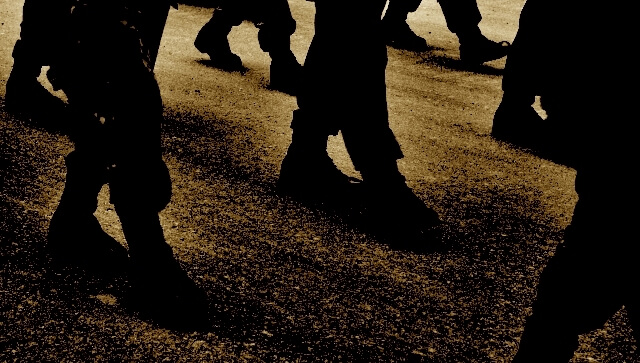
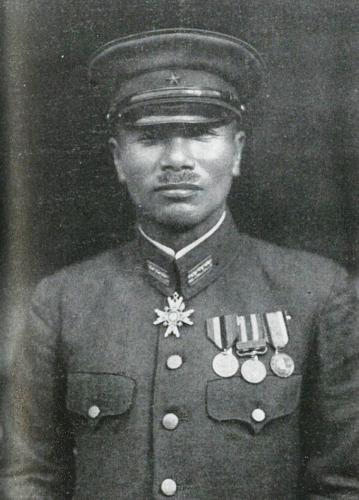
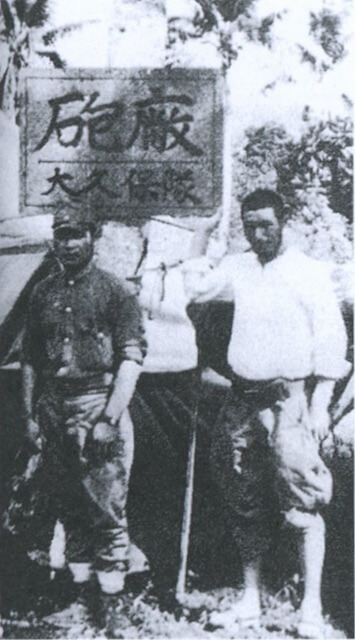



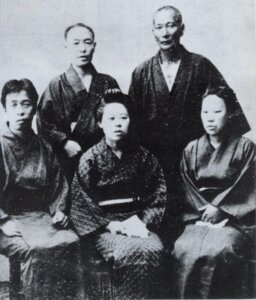

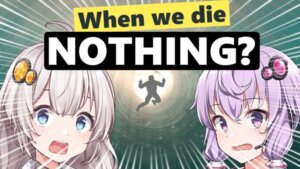

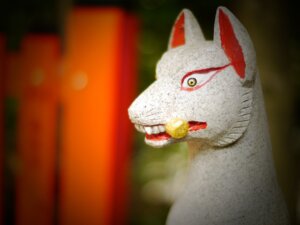

Comments